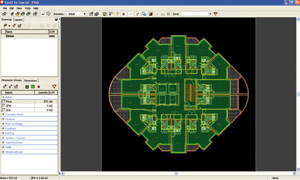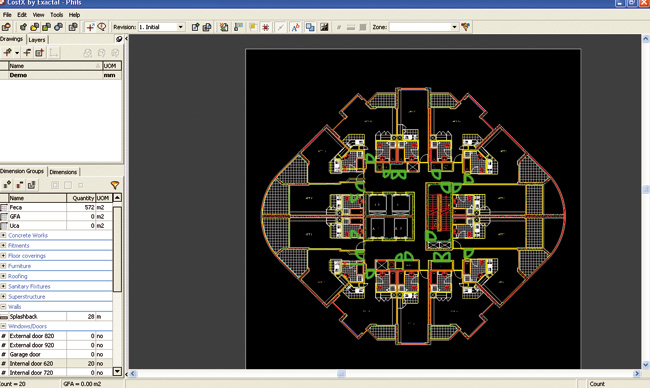Moving from pencil and drawing board to CAD improved the productivity of designers overnight. However, with so much design information captured in digital form, even greater benefits are possible. Martyn Day reports on a costings application thatÝs rapidly growing in popularity.
The main benefit of moving from paper to Computer Aided Design (CAD) is the ease of editing, while removing the need for rework. Now the majority of companies take their CAD systems for granted, itÝs amazing how many firms still look at CAD as being a better drawing board and not a totally different environment for creating and optimising designs. With the move to 3D, early adopters saw the opportunity to gain the benefits of Building Information Modelling (BIM) ¾ but it is not necessarily the death of 2D drawings, as the output is still the bread and butter of the construction world.
So, how about extending the use of 2D drawings or 3D models beyond mere symbolic representation for builders? With so much really useful, intelligent information included in the CAD file, there are a number of applications that give this data even better return on investment and improve productivity and budgeting of projects. Quantities and Costings seem like an obvious area for digital improvement but most of the tools are stand-alone, take data one way and essentially are ÙclunkyÝ to use.
Exactal
Exactal is an Australian-based software developer now operating in the UK that produces CostX, an intelligent tool that assists cost estimates from 2D or 3D CAD data. Launched in 2004, the software is now sold all over the world, including Ireland, UAE, Malaysia, Singapore, Cyprus, New Zealand and across Africa. CostX supports bi-directional links to existing standard formats and industry formats (DWG, PDF, DXF, Revit and in October of this year DGN) and captures project dimensions and quantities using its own Ùintelligent cost geometry technologyÝ to generate project estimates. Using a visual-like interface, measurements can be both automatically and manually extracted from CAD files. CAD experience isnÝt necessary to operate the software and there doesnÝt need any CAD software to be present on the PC to access the files. All measurements can be extracted to Excel.
CostX supports live links, so changes to any project drawings will automatically be reflected in the costings and quantities of the whole project. The software also offers analysis tools to compare and contrast these changes. The software comes with a range of frequently updated Rate libraries, or users can update or add-in their own custom costings. Then with this data, CostX can generate a raft of reports to aid in the decision process. It also has beneficial applications for Quantity Surveyors, Builders, Developers, Project Managers, Sub-contractors, Valuers, Estimators and Architects.

Obviously for Quantity Surveyors, CostX looks like a powerful solution as it provides a single environment for capturing dimensions, developing feasibility studies and generating full Bills of Quantities. The automatic report writer takes the pain out of repetitive tasks and its output is to a highly-professional presentation quality.
CostX Viewer
There is an easy way to share costing estimates with the CostX Viewer. Files can be distributed in a safe read-only, portable format, which can have live links back to the CAD data, offering real-time costings to all project participants or owners. Users of the Viewer can dig very deep into the project dimensions, quantities and spreadsheets, specifically to Ùten levelsÝ deep. The Viewing software also includes drawing interrogation tools. This is a great tool that helps project members to become acutely aware of the cost implications of any changes made.
Conclusion
CostX offers new possibilities for re-using the CAD design data to accurately estimate quantities and costs, within a live environment. The automation of the process will dramatically improve productivity. Some customers have anecdotally reported that work that has typically taken three days to complete can now be done in half a day and the more changes to a project, the bigger the rewards for using the automatic bi-directional cost estimation.
One particularly interesting use of this kind of software would be at the conceptual level, where construction costs, maintenance costs and operational costs could be estimated much earlier in the design process, leading to better optimised buildings. With the push for sustainability and materials becoming increasingly important, CostX could have an important role to play in exploring the performance and cost of any design or proposed design changes.
We will have a full review of CostX in the next edition of AEC. Price ú2,000 per seat.






